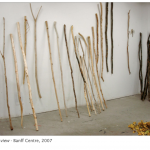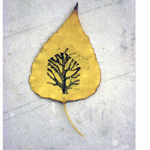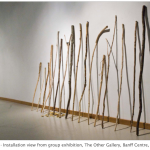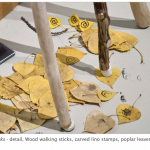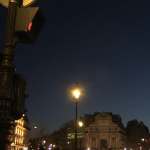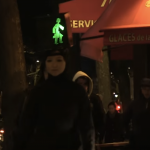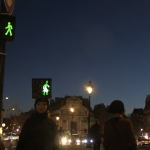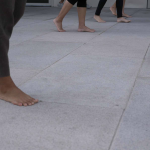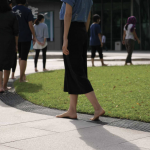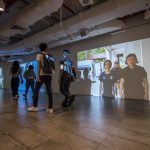“Walk a Mile in her Veil is an introspection of Arab identity through the lens of the veil and its user, inviting visitors to try on the veil and understand first-hand the cultural, social, and feminist motives behind it.” [credit]
Category Archives: The Everyday
Rozalinda Borcila, Center for Getting Ugly – Kara Holland’s Walk to the Beach (2006)
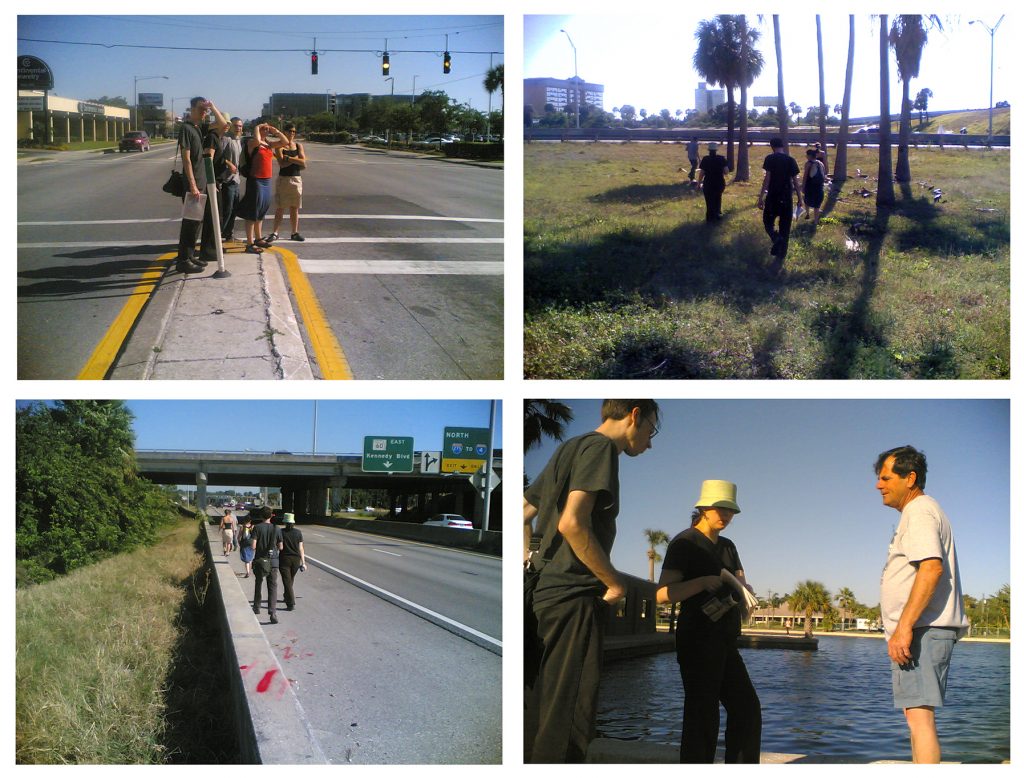
“In a city built around the logic of automobility, a small group documents several attempts to walk to Tampa’s last remaining public beach. We rely on instructions from passers-by who struggle to conform their mental map of the city to the possibilities of walking.” [credit]
From the original invite: ”
Kara Holland invites participants on a walk from the Westshore Palms neighborhood to the beach located directly west, less than 1 mile away. This public beach is one of the last few remaining in the city of Tampa. We will try to get to the beach on foot, navigating terrain that, not unlike much of the city, is hostile to walking. The walk will explore the ways in which otherwise “benign” structures (a corporate park, a mall, the highway and so forth) are aggressive to bodies not trapped in cars and effectively colonize public space. Participants will pause to mark especially hostile boundaries, using materials found on site. We will share a picnic upon arriving at the beach, or wherever we can no longer travel on foot. Recording devices for documenting the walk are welcome and encouraged (cell phone, cell phone camera, digital camera, video camera, audio recorder, etc). This walk is a collaboration with The Center For Getting Ugly as part of the “Walk, Talk, Eat, Talk Some More” project.
Date: April 15, 4:30 pm
Meeting place: Kara’s apartment, 4601 Gray St. Tampa FL, 33609
Duration: 2 hours (??)” [credit]
“Center for Getting Ugly – dedicated to the research, practice and sustained experimentation with conflict as essential political activity. the Center seeks to develop individual and collective capabilities for the production of radical politics. must embrace conflict as an essential, productive aspect of collaboration. must be perpetually dissatisfied with, and suspicious of, existing aesthetic or semantic strategies.
…
The Center for Getting Ugly is dedicated to the research, practice and sustained experimentation of social conflict, with the goal of encephalizing collective organs and social technologies for the production of radical politics. In other words, the Center operates on the premise that, given sufficient practice, we can develop collective revolutionary organs. The Center is not a group, a project or a place, but an open infrastructure. Its various subdivisions target specific practices or arenas for the production of critical deviance, with collective activity as its main underlying principle.
The Center for Getting Ugly launches invitations, provocations. it facilitates collaboration between multiple practitioners. it imagines, invents and sometimes even deploys probing devices. currently, its subdivisions are:
Can’t we all just get along? Counter-Cartographies of Playing Nice – invited or self-appointed Special Fellows conduct research on dominant modes of subjectivation in various concrete situations. though not all maps take the form of two dimensional representations, the desire is to produce interpretive works which may be used to incite, illuminate or facilitate intervention.
Walking and not Walking – develops extended skill-sharing, experimental workshops specifically focused on walking practices – and, given the ways in which mobility is structured around consumption and other forms of subjectivation, on practices of not walking: standing, stopping, pausing, staying and occasionally lying down.
A Synchronized Swimming – Different collectives are invited to design an un-resolvable conflict equation based on their own, unique working methods. These equations are passed on to another collective, who develop interpretive extensions/models for the sustension of conflict. A Synchronized Swimming then dives into the Pool: an exhibition/symposium/forum for incorporating these models into action.”
SOURCES:
- Archived “Common Places” blog and Flickr stream
Barbara Lounder, Stamp Sticks (2007)
- Barbara Lounder, Stamp Sticks (2007)
- Barbara Lounder, Stamp Sticks (2007)
- Barbara Lounder, Stamp Sticks (2007)
- Barbara Lounder, Stamp Sticks (2007)
“During a 2007 Walking and Art residency at the Banff Centre, I made walking sticks and related devices, exploring ways in which walking leaves traces and tracks in the landscape. Walking in the Banff area brings a certain frisson; there is always the possibility of dangerous encounters with other species, the elements, and difficult terrain.” [credit]
Norma Hunter, Walk this Way (2010)
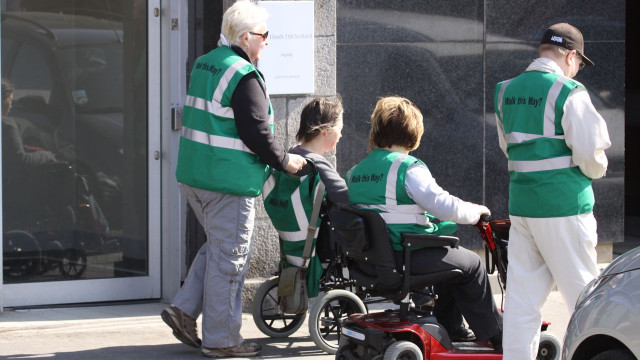
Norma Hunter, Walk this Way (2010) [credit]
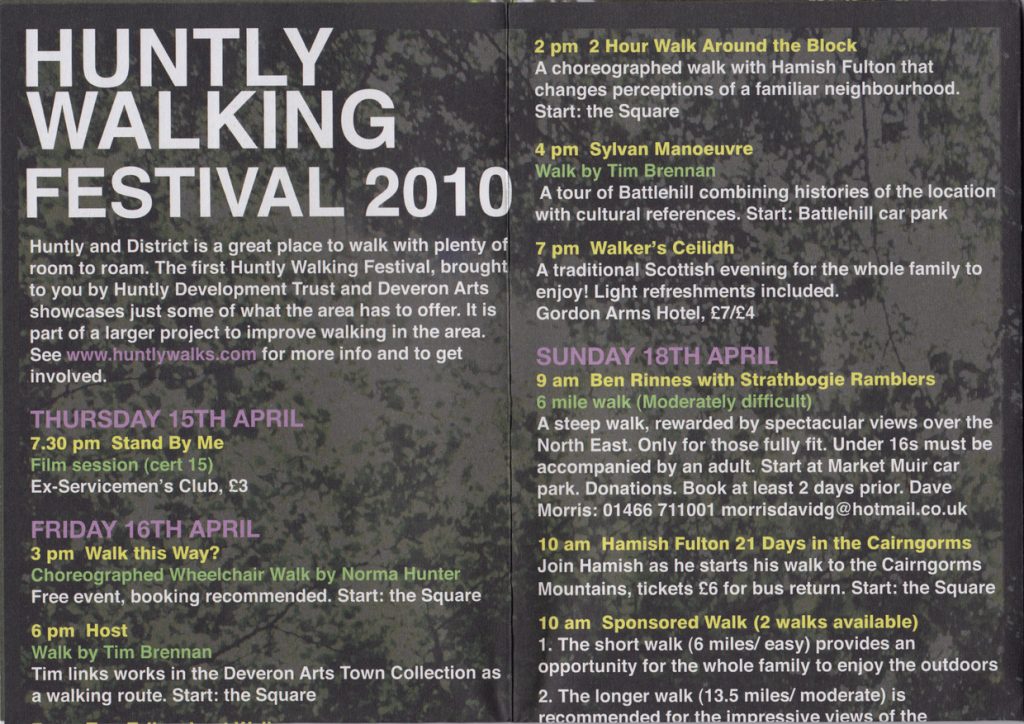
Yvonne Rainer, Trio A (1978)
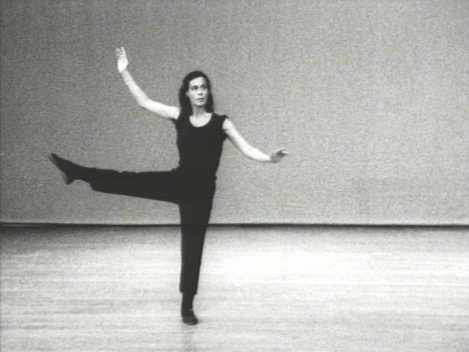
Yvonne Rainer, “Trio A” 1978. Video (black and white, sound), 10:21 min
“Yvonne Rainer—regarded as a foundational force in American contemporary art, film, and postmodern dance—began her career in New York in 1956. After a false start in acting, she entered the Martha Graham School, a dance school and associated company named for its founder, who is largely credited with revolutionizing modern dance. There, Rainer discovered a passion for this art form. She was trained in a style of movement characterized by expressiveness and virtuosity and in narrative choreography filled with drama and psychological intensity. But Rainer grew dissatisfied with the conventions of modern dance and the traditional relationship between dancer and audience. As she has explained: “Early on, I began to question the pleasure I took in being looked at, this dual voyeuristic, exhibitionistic relation of dancer to audience.”1 Fueled by such questioning, and her opposition to the tenets of classical and modern dance, she created Trio A.
Rainer choreographed Trio A in 1966, and performed it for the camera in 1978. Written for a solo performer, it incorporates no music and features a seamless flow of everyday movements like toe tapping, walking, and kneeling. “[It] would be about a kind of pacing where a pose is never struck,” the artist once described. “There would be no dramatic changes, like leaps. There was a kind of folky step that had a rhythm to it, and I worked a long time to get the syncopation out of it.”2 Trio A positioned Rainer as a leader among the dancers, composers, and visual artists who were involved in the Judson Dance Theater (which she co-founded in 1962), an avant-garde collaborative that ushered in an era of contemporary dance through stripped-down choreography and casual and spontaneous performances.
Yvonne Rainer’s “No Manifesto”
A year before creating Trio A, Yvonne Rainer wrote her “No Manifesto” (1965). Through it, she declared her opposition to the dominant forms of dance of the period—typified by Martha Graham—and outlined the tenets of her radical new approach:
No to spectacle.
No to virtuosity.
No to transformations and magic and make-believe.
No to the glamour and transcendency of the star image.
No to the heroic.
No to the anti-heroic.
No to trash imagery.
No to involvement of performer or spectator.
No to style.
No to camp.
No to seduction of spectator by the wiles of the performer.
No to eccentricity.
No to moving or being moved.3
Early Recognition—a Double-Edged Sword?
Sometimes, artists find that groundbreaking work produced early in their career may overshadow the rest of their output. This was the case for Rainer with Trio A and “No Manifesto.” In her words: “It’s a little unfortunate, because it eclipses everything else I’ve done. [It’s] the most out-there, visible signature of my career. That and the ‘No Manifesto.’”4 In the 1970s, she stopped dancing altogether and turned her attention fully to filmmaking, producing films including Lives of Performers (1972), Kristina Talking Pictures (1976), and Privilege (1990). It was not until the 2000s that Rainer would return to choreography.” [credit]
Michel de Certeau, “Walking in the City” from The Practice of Everyday Life (1980)
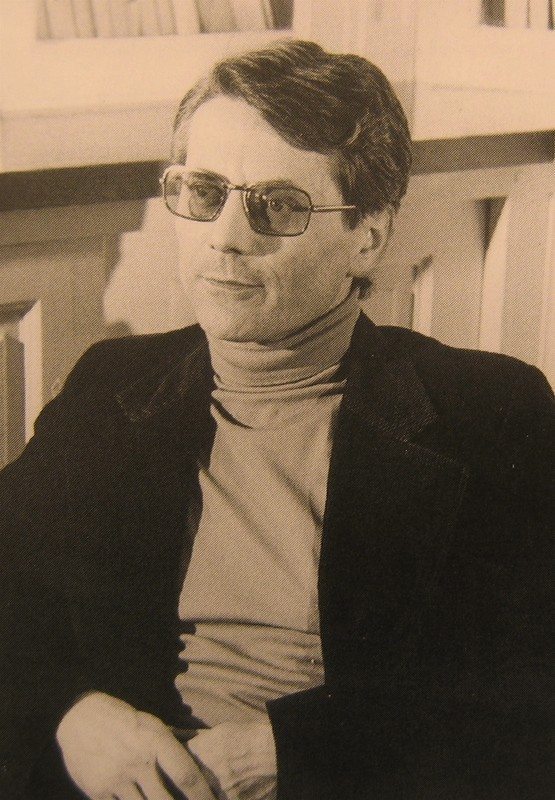
Michel de Certeau – French Jesuit philosopher and social theorist (1925-1986)
Certeau is often referenced for his essay, “Walking in the City,” in The Practice of Everyday Life (1980).
In this essay he elaborates on an analogy between urban systems and language, with improvisational walking (shortcuts, wandering, etc) being like turns of phrase, inside jokes, or stories. He states, “The act of walking is to the urban system what the speech act is to language or to the statements uttered.”
He describes the city as “a space of enunciation,” where walkers demonstrate possibilities through their walking choices. He states, “The walking of passers-by offers a series of turns and detours that can be compared to ‘turns of phrase’ or ‘stylistic figures.’ There is a rhetoric of walking.”
Jonathan L. Best writes a nice analysis of the essay here.
Inua Ellams, The Midnight Run (2005-)
The Midnight Run is a registered social enterprise. Like traditional businesses we aim to make a profit but what sets us apart is that we aim to – reinvest or donate those profits towards creating positive social change.
Inspiration.
The Midnight Run is a walking, night-time, arts-filled, cultural journey through a city and a typical Midnight ‘Runner’ has a healthy sense of adventure and seeks experiences beyond the mainstream. It is partially influenced by The Situationists – a political and artistic movement between 1957 & 1972 – started in France. Founders of the movement were tired of the commercialism of art and consumerism and wandered city streets in typical post-war bohemian fashion seeking REAL experiences.
Accordingly, The Midnight Run seeks to negate the frenzy and hysteria of mass media, pop culture, hype and reality T.V. for actual reality, for the simplicity and intimacy of walking and talking. Our idea is to reclaim the streets of a city, to dispel the idea of ‘danger after dark’ instead to ‘discover after dark’. It is to grow urban communities, situate meetings of strangers, for relationships to blossom, to inhabit the confines of glass, concrete, steel and structure as a child does a maze: with natural play and wonderment.
Why artists?
“During those early Midnight Runs, I’d run writing workshops and poetry exercise specific to locations we visited. After, I’d ask participants to share their writing and I noticed how it created new spaces for communication and conversation. Essentially, I stumbled across a simple way to deepen group dynamics and our appreciation and understanding of each other.”
“Over time I invited artists/activists of various disciplines to run workshops thereby widening the scope of this interaction. Artists/activists are often plugged into fascinating networks and know great spaces worth visiting for playful or aesthetic reasons. Searching for outdoors spaces to compliment their art forms made planning Midnight Run routes vastly more interesting… the artists work on several levels.” — Inua Ellams, Founder
But WHY JOIN A MIDNIGHT RUN?
50% of the world’s population live in urban environments. Despite growing population density we face issues of loneliness, depression and economic polarisation… because of global immigration and gentrification, many cities are rapidly losing their local, historical and communal identities in a land-grab for commercial space. These new paradigms favour younger, faster, richer members of societies, paradigms that are increasingly hostile to the youth and older members of societies.
The Midnight Run experience counters these issues by slowing urban life to talking, playing and creating within various urban spaces. Because the event is for one night only with strangers, participants are afforded anonymity and can attend without any danger of judgement or consequence. By inviting artists of diverse practices, we encourage participants to step out of comfort zones and exercise their creative muscle. By inviting local artists who inform the route, we ensure what is experienced on the night is specific and true to the locality, the inhabitants and their environment.
The ground-breaking idea behind the Midnight Run is a return to simplicity, to entertain without entertainment, to trust in community and conversation, to rediscover our essential creative selves.
INUA ELLAMS.
Born in Nigeria in 1984, Inua Ellams is an internationally touring poet, playwright, performer, graphic artist & designer. He has published three pamphlets of poetry including ‘Candy Coated Unicorns and Converse All Stars’ and ‘The Wire Headed-Heathen’. His first play ‘The 14th Tale’ was awarded a Fringe First at the Edinburgh International Theatre Festival and his third, ‘Black T-Shirt Collection’ ran at England’s National Theatre. In graphic art & design (online and in print) he tries to mix the old with the new, juxtaposing texture and pigment with flat shades of colour and vector images. He lives and works from London, where he founded The Midnight Run.
Inua hails from the Hausa tribe in Northern Nigeria, a people synonymous with a nomadic tradition. The Midnight Run came from this tradition, his search for a community to belong to, the transience and transformation of travel, and a belief in the bridge-building ability of arts and artistic interaction.
OUR BEGINNINGS.
The Midnight Run was found in 2005 by award winning poet and playwright Inua Ellams. In 2011 The Midnight Run embarked on a collaborative partnership with CCT-SeeCity, founded by Elena Mazzoni Wagner in Prato, Italy. This marked the beginning an expansion across Europe. To date Midnight Run events have commissioned in Manchester, London, Leeds, Milan, Firenze, Barcelona, Madrid & Auckland.
WHO WE WORK WITH.
Midnight Run events speak to themes of enhancing group communication, making different art forms accessible, supporting local artists and exploring cultural dynamics within urban environments. Events are typically commissioned by arts organisations, cultural festivals, community groups and corporate organisations. Organisations worked with include Southbank Centre, Contact Theatre, PUMA, Tate Modern, The Royal Society of Arts, Bush Theatre, Lomography, Create Festival + many more.
Kubra Khademi, Kubra & Pedestrian Sign (2016)
- Kubra Khademi, Kubra & Pedestrian Sign (2016)
- Kubra Khademi, Kubra & Pedestrian Sign (2016)
- Kubra Khademi, Kubra & Pedestrian Sign (2016)
Live Performance by Kubra Khademi
16 Feburary 2016, Paris, France
“PE: When you moved to France, you continued to put on walking performances. For Kubra & Pedestrian Sign (2016) you walked through Paris in a black dress and high heels with a pedestrian crossing lightbox tied to the top of your head, except the green sign in the box was a female figure. I’m curious about how you found the experience of reclaiming public space in this new European context.
KK: The challenges are different here: the texture and sense of the landscape, the cityscape, the people around me. Public space in France and the Parisian art scene are still very masculine, but in a far more subtle and sophisticated way. No one harasses me in Europe like they do in Afghanistan. I don’t need an armor to walk here. The city is like that blank white page again. That was the first performance I put on in a public space after then one in the Kabul. It was a few months after I arrived. The image of me is almost funny. I was looking into people’s eyes and allowing them to talk to me. Most of the reactions were similar, but one woman screamed at me from the other side of the street, “That is sexist! Skirts are sexist!”” [credit]
Amanda Heng, Every Step Counts (2019)
- Amanda Heng “Every Step Counts” (2019)
- Amanda Heng “Every Step Counts” (2019)
- Amanda Heng “Every Step Counts” (2019); Passers-by looking at the video of Amanda Heng’s work projected onto the walls in the Esplanade tunnel.
Multi-disciplinary project: workshop, text work in public space, archival footage, video projection and live performance
Dimensions variable
Collection of the Artist
Singapore Biennale 2019 commission
“Contemporary artist, curator and lecturer Amanda Heng (b.1951, Singapore) is known for making art that explores real-world issues through everyday activities – whether it’s walking, peeling beansprouts, or having coffee. Her recent work for the Singapore Biennale, titled Every Step Counts, draws upon the act of walking and takes an introspective look at the ageing body and how it is impacted by the rapidly evolving social and cultural environments.
Every Step Counts is a project spanning May 2019 to March 2020. The work comprises a two-day walking workshop, a text work, archival footage, a video projection and a series of live performances. The larger-than-life text work is featured on SAM’s hoarding along Bras Basah Road, while the video projection is exhibited at the Esplanade tunnel, joining the line-up of outdoor artworks displayed during the Singapore Biennale 2019.
WALKING IS A CENTRAL FEATURE IN MANY OF AMANDA HENG’S WORKS
Influenced by the Taoist principle of “working with rather than against nature”, Amanda sees walking as a form of meditation, a ritual from which to draw inner strength.
“It has to do with my intention of examining the body, which is an important element in live performances. The body is actually a live organic element that grows and gets old. This aged body – how should I look for the continuity of practising, of using it?”
KEEPING THINGS SIMPLE YET MEDITATIVE
Doing away with all bells and whistles, Amanda chose to present her work as a single line of text standing as a backdrop against a busy street; blue to represent the sky – a constant to anyone, anywhere; white to uplift; and bold italics to represent spirited movements. She hopes its simplicity will stop people in their tracks to savour the words amidst the hustle and bustle of life.
THE AUDIENCE COMES FIRST
Every component of Every Step Counts engages people in different ways. The workshop, for instance, involved nine participants spending two days charting their own routes of walking, who later had their walks filmed and are now being projected onto the walls of the Esplanade tunnel. It is hoped that when passers-by walk alongside these participants, albeit in a different space and time, they will become more attuned to their surroundings and their own pace.” [credit]
“Every Step Counts is exhibited at Singapore Art Museum on the hoarding, as well as Esplanade – Theatres on the Bay. This work also comprises a series of performances.
Amanda Heng invites participation and intimate conversations in her performative works. Often, she harnesses everyday situations to explore issues like the complexities of labour or the politics of gender. For her project in this Biennale, Heng revisits her ‘Let’s Walk’ series, first performed in 1999. Drawing upon the act of walking, the artist moves forward, looks back, turns inward and ventures outward with others. In this piece, she returns to the seminal scene of the walk and facilitates a workshop with people who chart their own routes of walking, and with whom she walks. In so doing, she generates reflections and perspectives, as well as comes to terms with the limits and stamina of the aging body.” [credit]
Amanda Heng, I Walk from the South to the North (2017)
This work saw Heng travelling alone on foot from Clifford Pier to the Causeway checkpoint in Woodlands. This solo walk continued Amanda’s interest in rituals, exchanges and their relationship with live performance in daily life.
“Heng has been a central figure in Singaporean performance art as well as feminist discourse in Singapore since the 1980s.
In 2017, Heng performed “I Walk From The South To The North” which constitutes a series of daily walks spanning the duration of two months (September – November). … From my perspective, this work is a comment on the breakneck speed at which Singapore develops. Bridges, skyscrapers and entire parks are built in the span of a few months. The urban landscape morphs and mutates unforgivingly. How do people hold on to memory and history?
It also reads to me as a reflection on technology and how we wield it in our contemporary lives to ‘make lives easier’. Singapore is a technologically advanced country with a highly comprehensive transport system. What is the point of walking anywhere anymore? Smartphones are ubiquitous, Google Maps is the most sensible mode of navigation. What is the point of talking to anyone, asking for directions anymore? Heng’s work brings focus back to the physical and social nature of the body and sheds light on the effects which technology has on that.
Could you tell us a bit more about your most recent walk from Clifford Pier to the Causeway which you took from September to November 2017?
It is titled “I Walk from the South to the North”. The participation is a little different from my previous walks. I deliberately do not get myself acquainted with the route so I start to ask around for directions so where I go depends entirely on who I chance upon and how forthcoming they are. I’d get these people to draw out maps or write out directions and these form part of the documentation for this project. Many people I approached were generous with their help and were surprised I wanted to walk so far. They kept insisting it was much faster to take the MRT nearby.” [credit]
